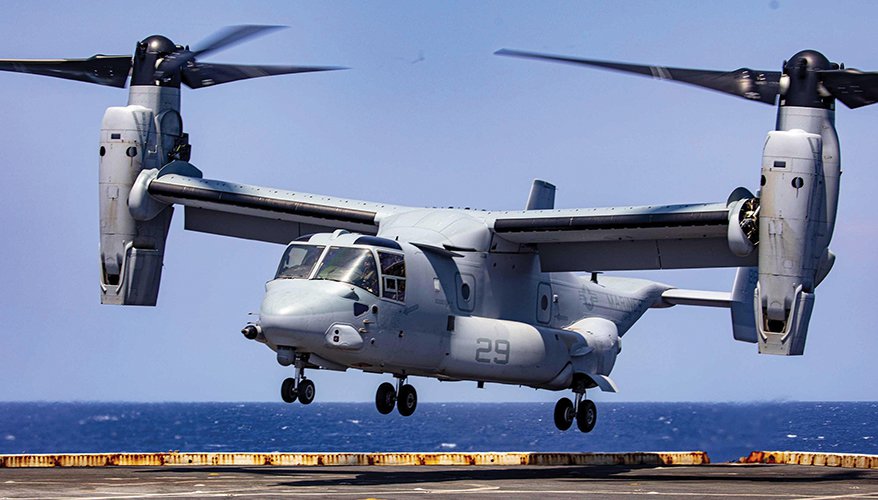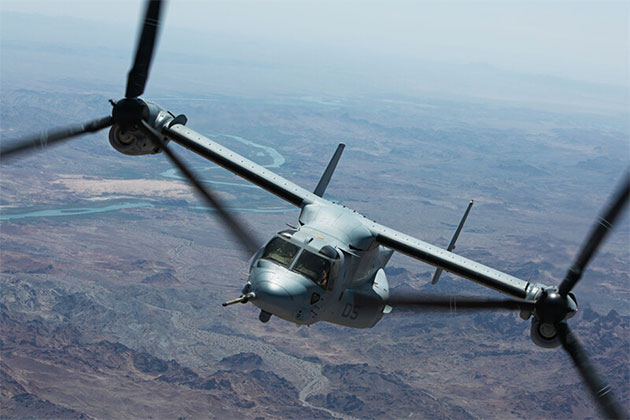In a milestone that signals the dawn of a new chapter in naval aviation, the U.S. Navy has officially received its first operational V-22 Osprey at the newly established Carrier Onboard Delivery (COD) squadron. This historic moment underscores the Navy’s commitment to modernizing its fleet and enhancing its logistical capabilities, ushering in a new era of operational flexibility and efficiency.
A Revolutionary Aircraft
The V-22 Osprey is no ordinary aircraft. A tiltrotor marvel that combines the vertical takeoff and landing (VTOL) capabilities of a helicopter with the speed and range of a fixed-wing aircraft, the V-22 is designed to perform a wide variety of missions. For the Navy, the introduction of the V-22 into its COD role represents a significant upgrade over its predecessor, the C-2 Greyhound, which has faithfully served the fleet for over five decades.
The arrival of the first operational V-22 at the new COD squadron marks the beginning of a phased transition that will see the Osprey taking over the critical task of transporting personnel, mail, supplies, and high-priority cargo between shore bases and aircraft carriers. With its advanced avionics, greater range, and ability to land on ships without the need for a traditional runway, the V-22 is poised to revolutionize how the Navy conducts these essential logistical operations.
A Squadron with a Mission
The newly established COD squadron, designated VRM-30 and nicknamed the “Titans,” has been specifically formed to operate the V-22 in its new role. Based at Naval Air Station North Island in San Diego, VRM-30 is set to become the Navy’s first operational squadron dedicated to the V-22 Osprey. The squadron’s mission is clear: to provide rapid, reliable, and versatile delivery capabilities to the carrier strike groups and other naval forces deployed around the world.

The commanding officer of VRM-30, Commander Thomas Reese, expressed his enthusiasm for the squadron’s mission and the arrival of the first V-22. “This is a significant moment not just for our squadron but for the entire Navy,” said Commander Reese. “The V-22 Osprey is a game-changer for naval logistics, and we are honored to be the first to bring this incredible aircraft into operational service. Our team is ready and eager to set the standard for future operations.”
Advantages of the V-22
The V-22 Osprey offers several key advantages that make it ideally suited for the COD role. Its ability to take off and land vertically allows it to operate from a wider range of ships and austere locations, increasing the Navy’s operational flexibility. The Osprey’s speed, which can reach up to 275 knots, allows it to complete missions faster than the C-2 Greyhound, reducing the time it takes to deliver critical supplies and personnel to the fleet.
Additionally, the V-22 has a significantly greater range than its predecessor, enabling it to cover more distance without the need for refueling. This extended reach is particularly important in today’s maritime environment, where the Navy’s carriers and strike groups operate across vast oceanic expanses. The Osprey’s advanced avionics and communication systems also enhance its ability to operate in challenging conditions, providing the fleet with a reliable and resilient logistical platform.
Looking to the Future
The arrival of the first operational V-22 at VRM-30 is just the beginning of what promises to be a transformative period for the Navy. As more V-22s are delivered and brought into service, the Navy’s ability to support its forward-deployed forces will be greatly enhanced. The Osprey’s versatility and advanced capabilities will not only improve the efficiency of COD missions but also open up new possibilities for other roles, including special operations support, search and rescue, and humanitarian assistance.
The Navy’s decision to adopt the V-22 for its COD role is part of a broader strategy to modernize its fleet and ensure that it remains capable of meeting the challenges of 21st-century maritime operations. As the V-22 takes its place in the Navy’s arsenal, it will serve as a testament to the service’s commitment to innovation and its ability to adapt to an ever-changing operational landscape.

A New Era Begins
As the first operational V-22 Osprey touches down at VRM-30, it marks the beginning of a new era in naval aviation. The Titans of VRM-30 are now poised to lead the way in demonstrating the full potential of this remarkable aircraft. With the V-22, the Navy is not just upgrading its logistics capabilities; it is setting the stage for the future of naval warfare, where speed, flexibility, and operational reach will be more important than ever.
The arrival of the V-22 at the new COD squadron is a historic moment, one that will be remembered as a key milestone in the evolution of naval aviation. As the Osprey takes flight in service of the fleet, it carries with it the promise of a stronger, more agile, and more capable Navy for the years to come.






